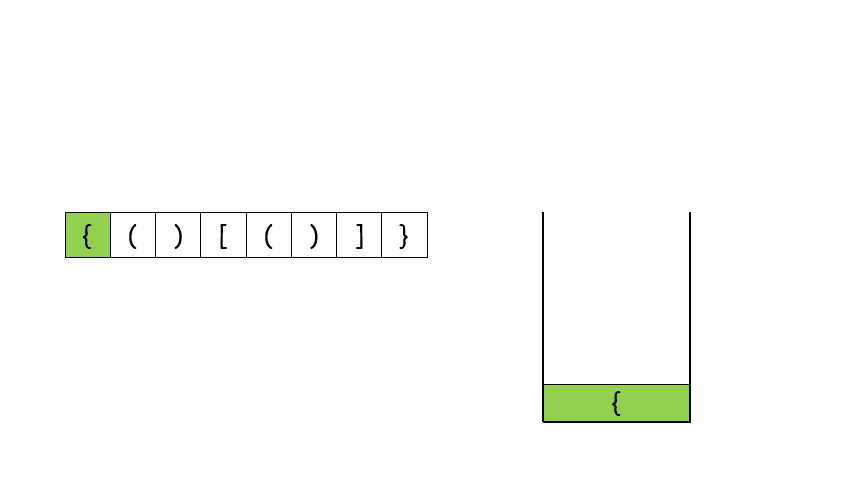前言:下面我们来学习栈和队列,及其相关的OJ题目,来巩固和提高栈和队列相关的知识。内容有点多,覆盖了动图便于理解,希望小伙伴们认真看完。

文章目录
一、栈
1 栈的gif动图

2 栈的性质
- 1 后进先出 (LIFO)
- 2 只能再一端删除即尾插尾删
3 栈的实现方法及其相关接口
1) 思考为什么用动态数组实现栈?
用链表实现栈尾删效率低,就算设置尾指针,但是尾删的时候还是要找尾指针的前面一个,因此效率偏低。用动态数组可以快速实现栈顶元素的删除,数组支持用下标访问,用一个top的变量记录栈顶位置,便可以快速实现尾插尾删
2) 相关接口和代码实现
- 1 需要实现的接口
typedef int STDataType;
typedef struct Stack
{
STDataType* a;
int top;
int capacity;
}ST;
void StackInit(ST* ps);//初始化
void STCheckcapacity(ST* ps);//考虑扩容
void StackDestroy(ST* ps);//销毁
void StackPush(ST* ps, STDataType x);//栈顶插入
void StackPop(ST* ps);//栈顶删除
STDataType StackTop(ST* ps);//取栈顶的数据
int StackSize(ST* ps);//栈的数据个数
bool StackEmpty(ST* ps);//判断栈是不是空,注意为空返回真
- 2 接口实现参考代码
void StackInit(ST* ps)
{
assert(ps);
ps->a = NULL;
ps->top = -1;
ps->capacity = 0;
}
void STCheckcapacity(ST* ps)
{
assert(ps);
if (ps->capacity == ps->top+1)
{
ps->capacity = ps->capacity == 0 ? 4 : ps->capacity * 2;
STDataType* tmp = (STDataType*)realloc(ps->a,sizeof(STDataType) * ps->capacity );
assert(tmp);
ps->a = tmp;
}
}
void StackDestroy(ST* ps)
{
assert(ps);
free(ps->a);
ps->a = NULL;
ps->capacity = 0;
ps->top = -1;
}
void StackPush(ST* ps, STDataType x)
{
assert(ps);
STCheckcapacity(ps);
ps->top++;
ps->a[ps->top] = x;
}
void StackPop(ST* ps)
{
assert(ps);
assert(!StackEmpty(ps));
ps->top--;
}
STDataType StackTop(ST* ps)
{
assert(ps);
assert(!StackEmpty(ps));
return ps->a[ps->top];
}
int StackSize(ST* ps)
{
assert(ps);
return ps->top + 1;
}
bool StackEmpty(ST* ps)
{
assert(ps);
return ps->top == -1;
}
4 栈的相关OJ->20. 有效的括号
1) 题目gif动图

2) 题目链接入口
3) 解题思路->左括号入栈,右括号出栈匹配
-
a 题目要求

-
b 解题思路-> 左括号入栈,右括号出栈匹配
鉴于栈的后进先出的特性,对于给定的字符串括号,遇到左括号 [、{、( 的任意一种便压入栈中,遇到右括号 ]、}、)的任意一种,便出栈一次进行比较,保证一次只匹配一对括号。*s==\0循环结束到匹配完所有的括号 -
c 两种极端情况
-
1 栈空了还遇到右括号
- 1.前面匹配成功后面出现右括号
( ) { } [ ] ] [ ] - 2.全是右括号
] ] ] ] ] ]
- 1.前面匹配成功后面出现右括号
-
2 循环结束还有左括号剩余
- 1.循环结束还有左括号
( ) { } [ ] [ ] { - 2.全是左括号
{ { { { [ 这种情况注意先把动态栈销毁,再返回值
- 1.循环结束还有左括号
-
4) 参考代码
注意c语言需要自己动手实现一个栈,每个人实现的栈代码不同,这里只给出接口应用过程,栈的实现代码不再重复给出
bool isValid(char * s){
ST st;
StackInit(&st);
while(*s)
{
if(*s=='(' || *s=='[' || *s== '{')
{
//遇到左括号栈入
StackPush(&st,*s);
s++;
}
else
{
//先考虑是不是栈空
if(StackEmpty(&st))
{
StackDestroy(&st);
return false;
}
else
{
//取栈顶的元素+删除
char top=StackTop(&st);
StackPop(&st);
if(
( *s==']' && top!='[' )
||( *s=='}' && top!='{' )
||( *s==')' && top!='(' )
)
{
StackDestroy(&st);
return false;
}
//匹配成功循环继续
else
{
s++;
}
}
}
}
//如果栈没空说明有多余的左括号,
//这里要注意销毁自己写的栈
bool ret=StackEmpty(&st);
StackDestroy(&st);
return ret;
}
二、队列
1 队列的gif动图

2 队列的性质
- 1 先进先出 (FIFO)
- 2 尾插头删
3 队列实现方法及其相关接口
1) 思考为什么用链表实现队列?
队列具有先进先出的特性,需要我们尾插头删
,若用动态数组实现,头删是便需要一直挪位,效率偏低。对此我们使用带尾结点的链表来实现,便可以快速尾插,且链表头删效率本来就高。
2) 相关接口和队列实现
- 1 需要实现的接口
typedef int QDataType;
typedef struct QueueNode
{
QDataType data;
struct QueueNode* next;
}QueueNode; //定义结点
typedef struct Queue
{
struct QueueNode* head;
struct QueueNode* tail;
int size;
}Queue;//结构体定义栈
void QueueInit(Queue* pq);//初始化
void QueueDestroy(Queue* pq);//销毁
void QueuePush(Queue* pq, QDataType x);//插入
void QueuePop(Queue* pq);//删除
QDataType QueueFront(Queue* pq);//取头数据
QDataType QueueBack(Queue* pq);//取尾数据
bool QueueEmpty(Queue* pq);//判断是否为空
void QueuePrint(Queue* pq);//打印
- 2 接口实现参考代码
void QueueInit(Queue* pq)
{
assert(pq);
pq->head = pq->tail = NULL;
pq->size = 0;
}
void QueueDestroy(Queue* pq)
{
assert(pq);
QueueNode* cur = pq->head;
while (cur)
{
QueueNode* Next = cur->next;
free(cur);
cur = Next;
}
pq->head = pq->tail = NULL;
pq->size = 0;
}
void QueuePush(Queue* pq, QDataType x)
{
assert(pq);
QueueNode* newnode = (QueueNode*)malloc(sizeof(QueueNode));
assert(newnode);
newnode->data = x;
newnode->next = NULL;
if (pq->head == NULL)
{
pq->head = pq->tail = newnode;
}
else
{
pq->tail->next = newnode;
pq->tail = newnode;
}
pq->size++;
}
void QueuePop(Queue* pq)
{
assert(pq);
assert(!QueueEmpty(pq));
//考虑只有一个数据的时候
if (pq->head == pq->tail)
{
free(pq->head);
pq->head = pq->tail = NULL;
}
else
{
QueueNode* Next = pq->head->next;
free(pq->head);
pq->head = Next;
}
pq->size--;
}
QDataType QueueFront(Queue* pq)
{
assert(pq);
assert(!QueueEmpty(pq));
return pq->head->data;
}
QDataType QueueBack(Queue* pq)
{
assert(pq);
assert(!QueueEmpty(pq));
return pq->tail->data;
}
bool QueueEmpty(Queue* pq)
{
assert(pq);
return pq->size == 0;
}
void QueuePrint(Queue* pq)
{
assert(pq);
QueueNode* cur = pq->head;
while (cur)
{
printf("%d->", cur->data);
cur = cur->next;
}
printf("NULL\n");
}
三、环形队列
1 环形队列的gif动图

2 简介
循环队列就是将队列存储空间的最后一个位置绕到第一个位置,形成逻辑上的环状空间,供队列循环使用。在循环队列结构中,当存储空间的最后一个位置已被使用而再要进入队运算时,只需要存储空间的第一个位置空闲,便可将元素加入到第一个位置,即将存储空间的第一个位置作为队尾。循环队列可以更简单防止伪溢出的发生,但队列大小是固定的。
3 循坏队列的实现方法
1)数组版
a 设计思路-> 多开一个空间
在循环队列中,当队列为空时,有front=rear,而当所有队列空间全占满时,也有front=rear。为了区别这两种情况,规定循环队列最多只能有MaxSize-1个队列元素,当循环队列中只剩下一个空存储单元时,队列就已经满了。因此,队列判空的条件是front=rear,而队列判满的条件是front=(rear+1)%MaxSize。
b 相关接口和代码实现
- 1 需要实现的接口
typedef struct {
int* a;
int front;
int rear;
int k;
} MyCircularQueue;
MyCircularQueue* myCircularQueueCreate(int k);//建立队列
bool myCircularQueueEnQueue(MyCircularQueue* mcq, int value);//队入
bool myCircularQueueDeQueue(MyCircularQueue* mcq);//队出
int myCircularQueueFront(MyCircularQueue* mcq);//取队头数据
int myCircularQueueRear(MyCircularQueue* mcq);//取队尾数据
bool myCircularQueueIsEmpty(MyCircularQueue* mcq);//判空
bool myCircularQueueIsFull(MyCircularQueue* mcq);//判满
void myCircularQueueFree(MyCircularQueue* mcq);//释放
void myCircularQueuePrint(MyCircularQueue* mcq);//打印
- 2 接口实现参考代码
MyCircularQueue* myCircularQueueCreate(int k)
{
MyCircularQueue* mcq = (MyCircularQueue*)malloc(sizeof(MyCircularQueue));
assert(mcq);
mcq->front = mcq->rear = 0;
mcq->k = k + 1;
mcq->a = (int*)malloc(sizeof(int) * (k + 1));
//多开一个空间,tail不存有效值
assert(mcq->a);
return mcq;
}
bool myCircularQueueEnQueue(MyCircularQueue* mcq, int value)
{
assert(mcq);
if (myCircularQueueIsFull(mcq))
{
printf("栈满:%d插入无效\n", value);
return false;
}
else
{
mcq->a[mcq->rear] = value;
mcq->rear = (mcq->rear + 1) % mcq->k;
return true;
}
}
bool myCircularQueueDeQueue(MyCircularQueue* mcq)
{
assert(mcq);
if (myCircularQueueIsEmpty(mcq))
{
printf("已空,无需删除\n");
return false;
}
else
{
mcq->front = (mcq->front + 1) % mcq->k;
return true;
}
}
int myCircularQueueFront(MyCircularQueue* mcq)
{
assert(mcq);
if (myCircularQueueIsEmpty(mcq))
return -1;
else
return mcq->a[mcq->front];
}
int myCircularQueueRear(MyCircularQueue* mcq)
{
assert(mcq);
if (myCircularQueueIsEmpty(mcq))
return -1;
else
return mcq->a[(mcq->rear - 1 + mcq->k) % (mcq->k)];
}
bool myCircularQueueIsEmpty(MyCircularQueue* mcq)
{
assert(mcq);
return mcq->front == mcq->rear;
}
bool myCircularQueueIsFull(MyCircularQueue* mcq)
{
assert(mcq);
return (mcq->rear + 1) % mcq->k == mcq->front;
}
void myCircularQueueFree(MyCircularQueue* mcq)
{
assert(mcq);
free(mcq->a);
free(mcq);
}
void myCircularQueuePrint(MyCircularQueue* mcq)
{
assert(mcq);
while (mcq->front != mcq->rear)
{
printf("%d ", mcq->a[mcq->front]);
mcq->front = (mcq->front + 1) % mcq->k;
}
printf("\n");
}
注意返回队尾数据时,rear可能为0,不能直接相减,而是应该+周期再减去 1 1 1,即return mcq->a[(mcq->rear - 1 + mcq->k) % (mcq->k)]
2)链表版
a 设计思路-> 开一个哨兵卫的头结点
开一个哨兵卫的头节点,让尾指针不存有效值,当tail->next=front的时候说明队满
b 相关接口和代码实现
- 1 需要实现的接口
typedef int DataType;
typedef struct Node
{
DataType val;
struct Node* next;
}Node;
typedef struct MCQ
{
Node* head;
Node* tail;
}MCQ;
Node* BuyNode();//创结点
MCQ* Creat(int k);//创建队列
bool MCQIsFull(MCQ* mcq);//判断满
bool MCQIsEmpty(MCQ* mcq);//判断空
void MCQEnter(MCQ* mcq, DataType x);//尾插入
void MCQPop(MCQ* mcq);//头删除
DataType MCQFront(MCQ* mcq);//返回队头元素
DataType MCQRear(MCQ* mcq);//返回队尾元素
void MCQPrint(MCQ* mcq);//打印
void MCQDestroy(MCQ** mcq);//销毁
- 2 接口实现参考代码
Node* BuyNode()
{
Node* newnode = (Node*)malloc(sizeof(Node));
assert(newnode);
newnode->next = NULL;
return newnode;
}
MCQ* Creat(int k)
{
MCQ* mcq = (MCQ*)malloc(sizeof(MCQ));
assert(mcq);
Node* phead = (Node*)malloc(sizeof(Node));
mcq->head = mcq->tail = phead;
while (k--)
{
Node* newnode = BuyNode();
mcq->tail->next = newnode;
mcq->tail = newnode;
}
//单向带头循环->首尾相连
mcq->tail->next = mcq->head;
mcq->tail = mcq->head;
return mcq;
}
bool MCQIsFull(MCQ* mcq)
{
assert(mcq);
return mcq->tail->next == mcq->head;
}
bool MCQIsEmpty(MCQ* mcq)
{
assert(mcq);
return mcq->head == mcq->tail;
}
void MCQEnter(MCQ* mcq, DataType x)
{
assert(mcq);
if (MCQIsFull(mcq))
{
printf("已满,%d插入失败\n", x);
}
else
{
mcq->tail->val = x;
mcq->tail = mcq->tail->next;
}
}
void MCQPop(MCQ* mcq)
{
assert(mcq);
if (MCQIsEmpty(mcq))
printf("栈空,无需删除\n");
else
mcq->head = mcq->head->next;
}
DataType MCQFront(MCQ* mcq)
{
assert(mcq);
if (MCQIsEmpty(mcq))
{
printf("栈空, 返回-1\n");
return -1;
}
else
return mcq->head->val;
}
DataType MCQRear(MCQ* mcq)
{
assert(mcq);
if (MCQIsEmpty(mcq))
{
printf("栈空,返回-1\n");
return -1;
}
Node* cur = mcq->head;
while (cur->next != mcq->tail)
{
cur = cur->next;
}
return cur->val;
}
void MCQPrint(MCQ* mcq)
{
assert(mcq);
Node* cur = mcq->head;
while (cur != mcq->tail)
{
printf("%d ", cur->val);
cur = cur->next;
}
printf("\n");
}
void MCQDestroy(MCQ** mcq)
{
assert(*mcq);
Node* cur = (*mcq)->head->next;
while (cur != (*mcq)->head)
{
Node* Next = cur->next;
free(cur);
cur = Next;
}
free(cur);
free(*mcq);
*mcq = NULL;
}
在这里注意找队尾的时候是需要遍历的,找到tail指针的前面一个结点。
四、栈和队列的相互实现OJ题
1 用两个栈来实现队列
1) 两个栈实现队列的gif动图

2) 题目链接入口
3) 解题思路->栈后进先出相反性质的两次运用
用两个栈来实现队列,pushST和popST,栈后进先出具有相反的性质,两次后进先出便能实现队列的先进先出
- a 入队列只放到栈pushST入
- b 出队列只从栈popST中出:
队列为空:返回-1;
popST不为空:popST栈顶元素就是出队列元素
栈popST为空:依次将栈pushST中的元素放入popST中,再出popST的栈顶元素就是队列出对元素
4) 参考代码
注意上面有栈的实现过程,这里只给出两个栈如何实现队列的代码
typedef struct {
ST pushST;
ST popST;
} MyQueue;
MyQueue* myQueueCreate() {
MyQueue*q=(MyQueue*)malloc(sizeof(MyQueue));
StackInit(&q->pushST);
StackInit(&q->popST);
return q;
}
void myQueuePush(MyQueue* obj, int x) {
StackPush(&obj->pushST,x);
}
int myQueuePop(MyQueue* obj) {
//如果popST没有数据了,就把pushST数据导过去
//popST的数据就符合先进先出的顺序了
int front=myQueuePeek(obj);
StackPop(&obj->popST);
return front;
}
int myQueuePeek(MyQueue* obj) {
//如果popST没有数据了,就把pushST数据导过去
//popST的数据就符合先进先出的顺序了
if(StackEmpty(&obj->popST))
{
while(!StackEmpty(&obj->pushST))
{
StackPush(&obj->popST,StackTop(&obj->pushST));
StackPop(&obj->pushST);
}
}
return StackTop(&obj->popST);
}
bool myQueueEmpty(MyQueue* obj) {
return StackEmpty(&obj->pushST)&&StackEmpty(&obj->popST);
}
void myQueueFree(MyQueue* obj) {
StackDestroy(&obj->pushST);
StackDestroy(&obj->popST);
free(obj);
}
2 用两个队列来实现栈
1) 两个队列实现栈的gif动图

2) 题目链接入口
3) 解题思路->只保留队出最后一个元素用来栈出
用两个队列来实现栈,首先我们知道,队列是先进先出,栈是后进先出。而两次队列的先进先出并不会改变其性质,让其变成后进先出的栈。对此我们引入一个辅助队列,入栈时让元素进入非空队列,而出栈时让非空队列除了最后一个队入的元素外,其余全部导入空队列,最后一个队入元素,就是栈最后进来的元素。再队出这个元素,依次循环进行就实现了栈的后进先出。
4) 参考代码
注意上面有队列的实现过程,这里只给出两个队列如何实现栈的代码
typedef struct {
Queue q1;
Queue q2;
} MyStack;
MyStack* myStackCreate() {
MyStack*st=(MyStack*)malloc(sizeof(MyStack));
QueueInit(&st->q1);
QueueInit(&st->q2);
return st;
}
void myStackPush(MyStack* obj, int x) {
//往非空队列导入数据
if(!QueueEmpty(&obj->q1))
QueuePush(&obj->q1,x);
else
QueuePush(&obj->q2,x);
}
int myStackPop(MyStack* obj) {
Queue*emptyQ=&obj->q1;
Queue*existQ=&obj->q2;
//定义一个空和非空队列指针
if(!QueueEmpty(&obj->q1))
{
emptyQ=&obj->q2;
existQ=&obj->q1;
}
//非空队列数据导入空队列,并保留最后一个元素
while(existQ->size>1)
{
QueuePush(emptyQ,QueueFront(existQ));
QueuePop(existQ);
}
int top=QueueFront(existQ);
QueuePop(existQ);
return top;
}
int myStackTop(MyStack* obj) {
//返回非空队列的队尾元素
if(!QueueEmpty(&obj->q1))
return QueueBack(&obj->q1);
else
return QueueBack(&obj->q2);
}
bool myStackEmpty(MyStack* obj) {
return QueueEmpty(&obj->q1)&&QueueEmpty(&obj->q2);
}
void myStackFree(MyStack* obj) {
QueueDestroy(&obj->q1);
QueueDestroy(&obj->q2);
free(obj);
}
五 、总结
通过这篇博客,希望大家对队列、栈和环形队列的类型、性质和用法又有了更深的理解,从学习基本性质到综合应用,一步步提升,一点点提高。今天博客我们就说到这里,期待我们下篇再见。
